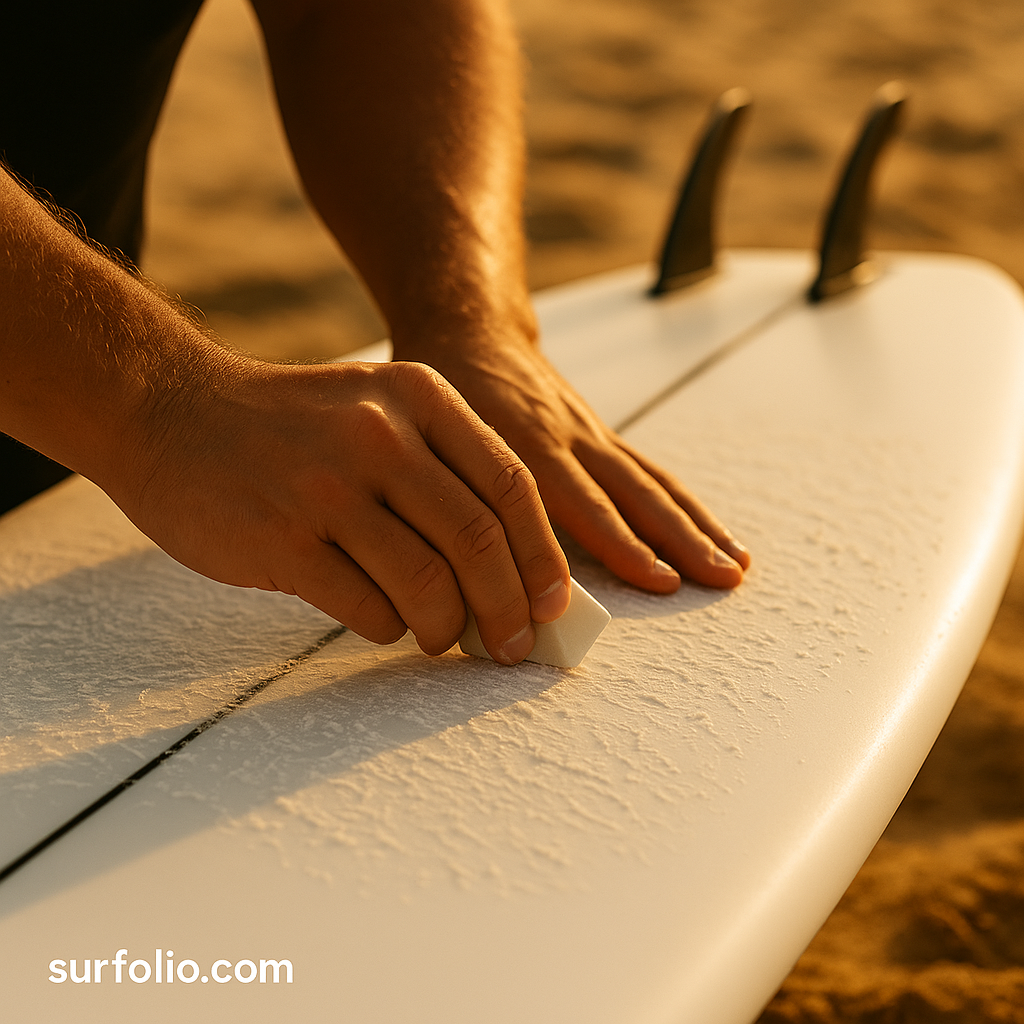
Why Surfboard Wax Matters
Surf wax might seem simple, but it’s one of the most important parts of your setup. It gives your feet traction and control, keeping you from slipping off when paddling or popping up.
Proper waxing also helps preserve the board’s surface and makes your sessions smoother, safer, and more fun.
Let’s break down how to apply wax like a pro — and how to clean it off when it’s time for a fresh coat.
What You’ll Need
Before you start, gather:
- Basecoat wax (for grip foundation)
- Topcoat wax (for temperature match)
- Wax comb
- Soft cloth or paper towels
- Coconut oil or wax remover (for dewaxing)
- Plastic scraper or old gift card
Pro tip: Always match your wax to the water temperature — cold, cool, warm, or tropical. Using the wrong type can make your wax too soft or too hard.
Step 1: Start with a Clean Surface
If your board already has old or dirty wax, remove it first (see dewaxing section below).
A smooth, clean surface ensures better adhesion and longer-lasting wax.
Step 2: Apply the Basecoat
Think of the basecoat as the “foundation” layer.
- Use firm, circular motions to rub the wax evenly over the deck where your feet usually go.
- Create a light texture of bumps — these help grip the topcoat later.
- Don’t overdo it; you’re aiming for light stickiness, not thickness.
Step 3: Add the Topcoat
The topcoat provides the actual traction.
- Choose the correct wax for your water temperature.
- Apply it gently over the basecoat in small circles or crosshatch patterns.
- Cover the board’s main standing and paddling areas — nose, mid-deck, and tail.
You’ll notice small wax beads forming — that’s perfect. Those beads trap water and give your feet better grip.
Step 4: Maintain Your Wax
Your wax will flatten and lose stickiness after a few sessions. To refresh it:
- Lightly comb the surface with a wax comb in diagonal strokes.
- Add a small amount of new topcoat wax.
This brings back the texture and tackiness without needing a full dewax.
Step 5: How to Dewax a Surfboard
After a while, your wax will get dirty, sandy, or uneven — time for a reset.
1. Warm It Up
Leave your board in the sun for a few minutes (not too long — avoid overheating). The wax will soften.
2. Scrape It Off
Use a plastic scraper or old card to remove the soft wax.
Work from nose to tail, keeping the pressure light to avoid scratching your board.
3. Wipe It Clean
Use a cloth with a little coconut oil or wax remover to wipe off any residue.
Finish with a dry cloth — your board should feel smooth and residue-free.
4. Reapply Fresh Wax
Now your board is ready for a new basecoat and topcoat.
Fresh wax means better traction, more control, and less slippage.
Waxing Tips from the Pros
- Always wax in the shade to prevent melting during application.
- Avoid sand while waxing — it clogs texture and ruins grip.
- Don’t overapply — a thin, even layer works best.
- Check your wax before paddling out. If it feels slick, refresh the topcoat.
When to Rewax
As a general rule:
- Light waxing: Every 2–3 sessions.
- Full dewax + reapply: Every few weeks or after a surf trip.
Regular maintenance keeps your board feeling new and performing well.
Final Thoughts
Waxing your surfboard isn’t just a chore — it’s part of the ritual. That first touch of fresh wax connects you to the ocean before the session even starts.
Keep your wax clean, your texture fresh, and your setup tuned — and every wave will feel smoother under your feet.
Good wax equals good surfing.
